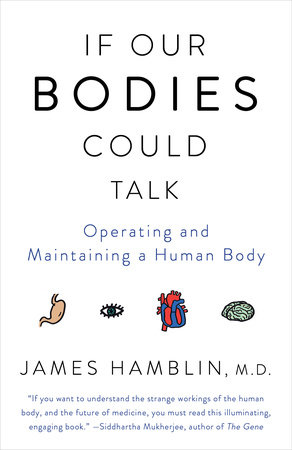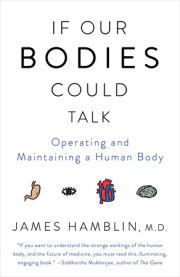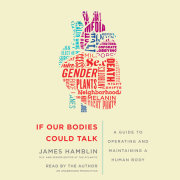PART ONE
APPEARING
THE SUPERFICIAL PARTS
Butterfly children” are so called because their skin is like butterfly’s wings. The name is meant to convey extreme fragility. But the weakness in butterfly wings is only a product of the fact that we are some one hundred thousand times larger than butterflies. In terms of biomechanics, these wings are actually paradigms of efficiency: light enough to be operated by a flying worm a fraction of their size, yet strong enough to hold up under the intense shear force of the wind and torrential rain that would be for us like standing under Niagara Falls.
The skin of a butterfly child, on the other hand, is rather an abject failure of biomechanics. Because of one detail. The formal name of the disease is dystrophic epidermolysis bullosa, or DEB. It’s traditionally considered a pathology of the skin, the domain of the dermatologist, because it renders the skin like tissue paper that has been left in the sun. Such skin falls apart at the lightest touch. The condition has no cure. It is the worst disease you’ve never heard of. I write that without presuming which diseases you have heard of. The trademarked motto of the Dystrophic Epidermolysis Bullosa Research Association is “the worst disease you’ve never heard of.” Its current executive director, Brett Kopelan, coined the phrase in earnest.
His daughter Rafi was born in a Manhattan hospital on November 19, 2007. Her mother, Jackie, was more than a little concerned that patches of skin were missing on their newborn’s hands and feet. She had been two weeks past due, and the doctors initially reassured Jackie and Brett that their baby had been “overcooked.” But the casual dismissal proved too casual when over the next few hours Rafi began bleeding. Nurses rushed her to the intensive care unit. There she would spend the first month of her life in complete isolation, undergoing a battery of tests, unable to be touched by her parents. After two weeks the doctors came to the Kopelans with a potential diagnosis, a name that would become their lives.
“They think it’s something called epi-dermo-lysis . . . bullosa?” Brett recalls saying in a harried phone call with his brother, who is chief of surgery at a hospital just across the river in New Jersey, to which the surgeon replied, “Oh, shit.” Brett ran to Google and read about DEB. His first thought was that it was the worst disease he’d never heard of.
On the short arm of the third of your twenty-three chromosomes sits a gene called COL7A1. It is responsible for the production of the protein that assembles collagen VII. Collagen proteins constitute all of the connective tissue in our bodies, and a third of our total protein. From the Greek for “glue,” collagen holds together everything from skin to ligaments and tendons. It comes in several known types (of which collagen VII is one).
Epidermolysis bullosa is a rare disease in several ways, not least in that much of the problem traces to a discrete gene. Most diseases are far more complex than any single gene can explain. But mutations in the COL7A1 gene seem to be responsible for all three major forms of dystrophic epidermolysis bullosa, of which Rafi’s is the most severe.
Collagen VII anchors our outer layer of skin (epidermis) to our base layer (dermis). Without it, the layers separate and the skin crinkles and blisters, coming off at the slightest provocation. When Rafi reflexively scratches an itch, she wounds herself. The seams on her shirt cause blisters. Many mornings she wakes up with her pajamas pasted to her skin in multiple places by dried blood. The extrication is grueling.
And because collagen VII provides structure throughout the organs of her body, this affects not just the skin, but the internal organs as well. Blisters and scars within her mouth and esophagus make it difficult to chew and swallow food. She has eye inflammation that can lead to blindness. She has a very high risk of developing an aggressive type of skin cancer at a young age. She has osteoporosis, syndactyly (fusion of the fingers), and mild heart failure.
Rafi’s form of epidermolysis bullosa affects fewer than one in a million infants. For those who survive, life does not involve much interaction with other people. So it is a disease of people whom we are not likely to come to know. The spectrum of what most of us consider normal in our day-to-day lives is skewed strongly away from conditions like EB, and toward small blemishes. If it weren’t, we might be more appreciative of the skin that we have, and the simple fact that it adheres to our bodies.
The average person has about six pounds of skin. Like most (though not all) organs, it’s essential to life. If you woke up one day and your skin had vanished, you would quickly die. In what remained of your short life, there would be problems socially. It’s the largest and most dynamic organ in the human body, constantly turning over and regenerating. Skin, along with hair, is unique among body parts in that it is dead cells we carry around. In any other organ, dead cells are discarded. But the cells in skin and hair stay along with us for a while and serve important functions, not least of which is social identity and thus the foundation on which the understanding of ourselves is built.
The skin we had last year—last season, even—is not the skin we have today. Most of the cells that compose our bodies are constantly dying and being replaced. Around 8 percent of our genes are not even human, but viral. We are born with viruses woven into our DNA, and we contain trillions of bacteria that are responsible for, among other things, the appearances of our faces, our body weights, and our states of mind. Our bodies are dynamic networks of genetic information shaped by experience, and microbes that change who we are in every moment. We are born with signals that will tell us to go bald when most people would appraise us more favorably if we had hair, and to be anxious when we needn’t be, and to get cancers that we tried hard to avoid. The doling out of years and health and happiness will not be fair.
The seemingly superficial parts, and the way they are perceived by ourselves and others, accumulate into how we understand ourselves, and then into how we move through the world and treat one another.
How can I tell if I’m beautiful? I mean in the purely superficial physical way that I know I shouldn’t care about but do because I am a person who exists in the world.
In 1909, Maksymilian Faktorowicz opened a beautification establishment in Los Angeles. Under the name Max Factor, he would become famous for his cosmetic products, which he sold as part of a pseudoscientific process of “diagnosing” abnormalities in people’s (mostly women’s) faces. He did this using a device he invented called the “beauty micrometer.” An elaborate hood of metallic bands held in place by an array of adjustable screws, the micrometer could be placed over a woman’s head and, as one of his ads at the time claimed, flaws almost invisible to the ordinary eye would become obvious. Then he could apply one of his “makeup” products, a term coined by Factor, to correct the flaw in this person: “If, for instance, the subject’s nose is slightly crooked—so slightly, in fact, that it escapes ordinary observation—the flaw is promptly detected by the instrument, and corrective makeup is applied by an experienced operator.” Even if putting on a metal hood that could tell people exactly why they’re not beautiful didn’t seem wrong on infinite levels, there was also the problem that Factor’s micrometer was contingent on an empirical definition of beauty. A device that tells people what’s wrong with them is predicated on an understanding of what is right. Max Factor’s approach is a textbook example of the sales tactic that is still so successful in selling body-improving products: convince people that there is a deficit in some concrete way, and then sell the antidote.
In the case of facial symmetry, some evolutionary biologists do believe that we are attracted to symmetric faces because they might indicate health and thus reproductive viability. From a strict perspective of evolutionary biology, someone with a prominent growth spiraling out of the side of their eye, for instance, might be viewed as a “maladaptive” choice for a mate. Instincts warn that this person may not survive through the gestation and child-rearing process, possibly not even conception. Best to move on.
But today most people survive long enough to reproduce and care not just for children, but grandchildren, great-grandchildren, and even domesticated cats. We can be less calculating about who to mate with. We can and do afford ourselves attraction not to some standard of normalcy, but to novelty and anomaly.
While Factor was convincing everyone that they were empirically inadequate based on a standard of normalcy that he created to sell products, the University of Michigan sociologist Charles Horton Cooley proposed a more nuanced approach, called “the looking glass self.” The idea was that we understand ourselves based not on some empirical idea of what is right or wrong about us, but from how others react to us. It’s difficult to believe you’re physically attractive when the world treats you otherwise, and vice versa. “The thing that moves us to pride or shame,” he wrote in 1922, “is not the mere mechanical reflection of ourselves, but an imputed sentiment, the imagined effect of this reflection upon another’s mind.”
Cooley repopularized the timeless idea that other people are not just part of our world, or even merely important to our understanding of ourselves: They are everything. Technically there are individual humans, just as technically coral is a collection of trillions of tiny sessile polyps, each as wide as the head of a pin. Alone in the sea, the polyps would be nothing. Together they are barrier reefs that sink ships.
The idea of a looking-glass self could seem disempowering, in that our understandings of ourselves are subject to the perceptions of others. A less devastating way of thinking about a world of looking-glass people, I think, is the idea that everywhere we go, not only are we surrounded by mirrors, but we are mirrors ourselves. It’s not the face in the Max Factor machine that matters, but the way that face is received. We can’t always choose our mirrors, but we can choose the kind of mirrors we will be—a kind mirror, or a malevolent mirror, or anything in between.
Why do I have dimples?
The muscle that pulls the corners of your mouth up and back (a “smile”) is called the zygomaticus. In people with dimples, that muscle is shorter than in the average person and may be forked into two ends, one of which is tethered to the dermis of the cheek, which then gets sucked inward when the person smiles. This is one way that beauty happens.
It’s an anatomical anomaly, sometimes even referred to as a “defect.” That understanding comes from an oft-cited theme in biology: that form necessarily correlates with function. Everything must happen for some reason, right? If dimples are a form without a clear function, then it’s easy to dismiss them as defects. It would be easier to write this book if it were the case that our body parts either had a clear purpose or else represented defects or diseases. But we’re more complex and interesting than that.
Biological function is a concept foundational to understanding health and disease, and it’s defined most often as the reason that a structure or process came to exist in a system. We have opposable thumbs, by the etiological theory of biological function, because they gave us an advantage in using certain tools.
While form can help inform our understanding of function, though, few cases are so clear-cut as thumbs. Some beards grow, some skin peels, and some cheeks dimple because they evolved to do so in certain people under certain conditions. There is no “purpose,” teleologically, for beards to grow or skin to peel or cheeks to dimple.
Theoretically all functions should together contribute to our fitness—to keeping us alive and well, as populations—but they may not do so individually. In isolation, a particular bodily function—like sleeping, for instance—may seem to be only a weakness. Sleeping is a time when we might be eaten by birds. But it exists, according to leading theorists on the still outstanding question of why we sleep, because it augments the functions of other body parts.
Elements of our forms may also be vestigial, like wisdom teeth or appendices, relics that lost function over time as systems changed. There is a spectrum of vestigiality, with some parts trending toward obsolescence but not yet useless. Other parts may never have been functional, but simply emerged as side effects of the functions of other parts. (These are sometimes known as “spandrels,” an allusion to decorative flourishes in architecture that serve no purpose in supporting the structure.)
The overarching idea is that almost no body part can be explained in isolation. They make sense only in the context of whole people, just like whole people make sense only in the context of whole populations. In a parallel world, dimples are anomalies we would attempt to prevent or correct. But in this time and place we choose to desire and envy them. Sometimes even to create them by force.
If I didn’t have dimples, could I give them to myself?
In 1936, entrepreneur Isabella Gilbert of Rochester, New York, advertised a “dimple machine” that consisted of a “face-fitting spring carrying two tiny knobs which press into the cheeks.” Over time, this force should produce “a fine set of dimples.”
It didn’t, though, because that is not how dimples work.
If only as an alternative to that particular form of hell, we may be fortunate that today a surgeon can perform a twenty-minute procedure to suture a cheek muscle known as the buccinator to the interior surface of the skin of a person’s skin, creating a dimple. It can all be done without ever puncturing the skin from the outside, coming through the inside of the cheek and cutting out a little bit of the cheek muscle, then running a suture through that muscle to the undersurface of the skin in the cheek. Pull it tight, and the skin will pucker. This is all done while the person is awake.
The puckering is exactly the sort of outcome that cosmetic surgeons spend years perfecting the art of suturing in order to avoid. So it took a truly heterodox thinker to invent the procedure. Based in Beverly Hills, plastic surgeon Gal Aharonov considers himself the father of the American trend in dimple surgeries. “It wasn’t a trend before I started doing it,” he told me. That’s a phrase I rarely trust, but he does appear to have created the dimpling technique, about ten years ago.
Copyright © 2016 by James Hamblin. All rights reserved. No part of this excerpt may be reproduced or reprinted without permission in writing from the publisher.










